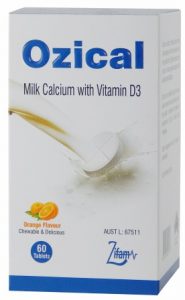
Healthy bones - For Longer Mobility & Independent Life!
Strong Bones Keep us Moving
The skeleton system of our body plays a vital role throughout our lifetime. It supports our body’s framework and protects our vital organs. Bones help in storing minerals like calcium and phosphorous, provides support to the muscles for movement. Bones are continuously changing. At a young age, it has the capability of growing faster and stronger. As we grow older, our bones also show the signs of aging. The bone mass density (which indicates the strength of our bones is at its peak at the age of 30yrs. As bones lose their strength and density due to multiple factors, the condition is termed ‘osteoporosis’ (porous bones)
Common Causes of Poor Bone Density
- Vitamin D & Calcium deficiency
- Poor Diet
- Physical inactivity
- Advancing Age
- Hormonal dysfunctions like thyroid etc.
- Medications
- Smoking & alcohol usage
The Calcium Gap
- Researchers have coined the concept “ Calcium Gap” to describe the significant difference between the recommended level of calcium and the actual intake of calcium.
- This gap is most pronounced in children aged 9-18, females aged 19-50, and individuals over 70 years of age.1
- The recommended intake level for adults is 1,000 mg of calcium per day.
Effects of Aging on Bone Health
- Both women and men in old age require additional calcium. Women’s increased needs for calcium begin at the age of 50 years, while in men the needs increase at 60 years, both from 1,000mg to 1,200mg per day.2
- Osteoporosis, a bone disease among aging populations, is characterized by a decrease in bone density & quality. It makes bones weak and fragile, difficult to heal a broken bone after an osteoporotic fracture. It affects an estimated 30-50 million people around the world, 80% of them being women.3 Certain risk factors may act as a catalyst for the early development of osteoporosis.
- Lack of vitamin D and calcium in diet, lack of physical activity, being underweight, smoking and drinking, hormonal imbalances, and intake of certain medications are some common f risk factors that may accelerate deterioration of bone health.
Five steps may help prevent osteoporosis
- Get the calcium and vitamin D you need every day.
- Perform regular weight-bearing and muscle-strengthening exercises.
- Avoid smoking or consuming too much alcohol.
- Determine if and when you need to be screened for bone density scan. Discuss with your physician.
- Take medication, if required under the guidance of your medical practitioner.
Investing in healthy bones to prevent osteoporosis later in life is one of the most fruitful decisions. Keep track of your calcium and vitamin D levels, optimize their intake—the two most essential factors of bone health.
Remember, bone health can be an important determinant for a longer mobile and independent life.
References
Adapted from:
- Ausman, Lynne, PhD, RD. “Calcium, Phosphorus, and Magnesium.” Tufts University, Boston. Lecture.
- https://www.ncbi.nlm.nih.gov/books/NBK56068/table/summarytables.t3/?report=objectonly
- Gropper, Sareen Annora Stepnick, et al. Advanced Nutrition, and Human Metabolism. Cengage Learning, 2018.
An Awareness Initiative from Makers of:


Product of:

Zifam Pinnacle Pty Ltd,
Sydney, Australia



